Details into the Korean Peninsula's "Crow's Eye View" pavilion for the 2014 Venice Biennale
By Bustler Editors|
Tuesday, May 27, 2014
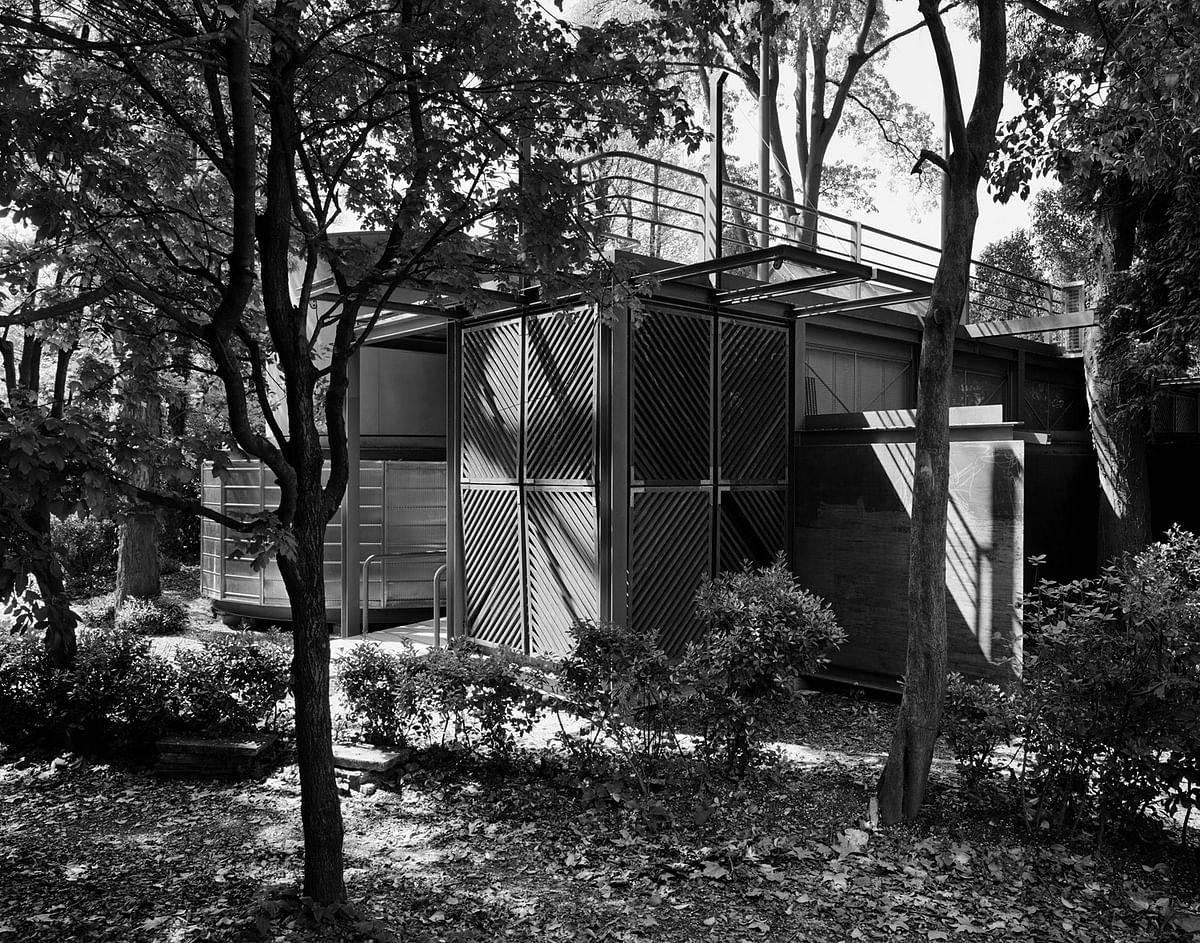
Related
In the Korean Peninsula's response to the 2014 Venice Biennale theme of rediscovering national identity through architecture, the "Crow's Eye View" pavilion explores the divided state of North and South Korea, and extends that discussion to the global state of architecture itself.
The multi-themed pavilion uses architecture as a key to discovering new narratives of the peninsula's complex past, present, and future in an architectural and social perspective.
Read more details about the pavilion below.
"In the immediate aftermath of World War II, the Korean Peninsula was divided in two. Within the polarizing global and state systems of the Cold War, a society and culture that had maintained a unified state entity for more than a millennium evolved radically divergent yet irrevocably interconnected economic, political, and ideological systems. The trauma of war and adversarial politics have too often sensationalized and over-simplified this condition, reproducing clichés and prejudices that obscure the complexity and possibilities that lie in the Peninsula’s past, present, and future. In the Korean Pavilion, the architecture of North and South Korea is presented as an agent - a mechanism for generating alternative narratives that are capable of perceiving both the everyday and the monumental in new ways."
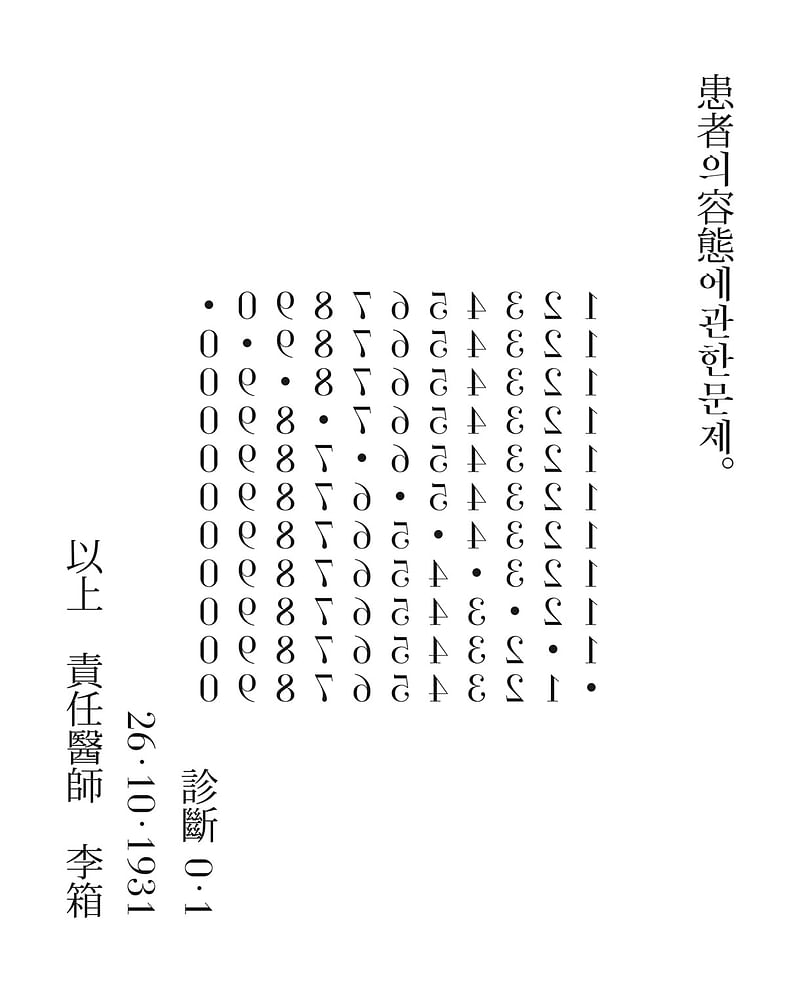
"The Korean Pavilion is inspired by 'Crow’s Eye View,' a poem by the Korean architect-turned-poet Yi Sang (1910 -1937). In contrast to the singular and universalizing perspective bird’s eye view, the crow’s eye view points to the impossibility of a cohesive grasp of not only the architecture of a divided Korea but the idea of architecture itself. Like uncharted patches of an irregular globe, a diverse range of work produced by architects, urbanists, poets and writers, artists, photographers and film-makers, curators and collectors forms a multiple set of research programmes, entry nodes, and points of view.
They call attention to the urban and architectural phenomena of the planned and the informal, individual and collective, the heroic and the everyday. Intertwined yet in opposition, spilling over to each other, they reveal the way that a wide range of architectural interventions have reflected and shaped the life of the Korean Peninsula. The Korean Pavilion reveals the Korean Peninsula as both symptom and agent, both archetype and anomaly of the tumultuous global trajectory of the past 100 years.
Crow’s Eye View: The Korean Peninsula is settled on four large themes—Reconstructing Life, Monumental State, Borders, and Utopian Tours.'
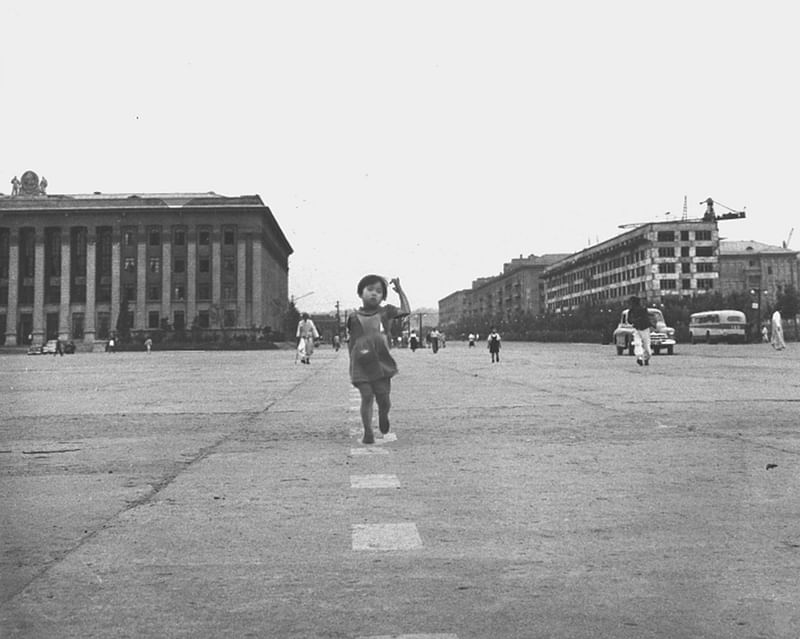
"Reconstructing Life - After the Korean War, the two Koreas embarked on divergent paths of bringing stability and growth to their societies. During the War, many North Korean cities, including Pyongyang, were totally leveled by bombing. The idea of architecture - the building of houses, monuments, institutions upon a tabula rasa -- constituted a founding myth for the new socialist nation.
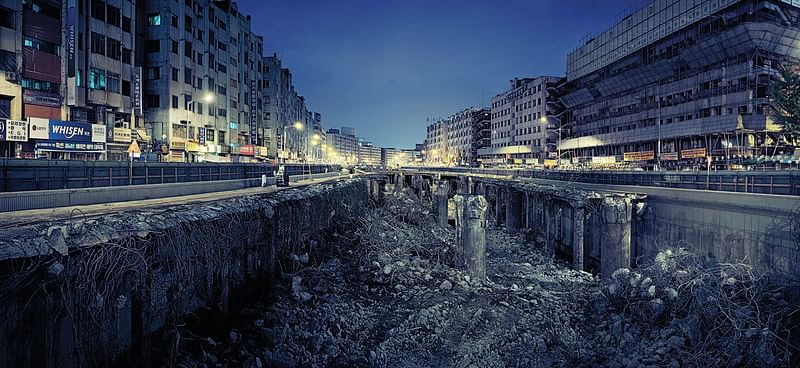
"If old Pyongyang was destroyed by bombs dropped from the sky, the historical landscape of Seoul was destroyed on the ground by bulldozers. After three decades of high state-driven growth, Seoul has become a hybrid metropolitan city. Reconstructing Life takes a glimpse at the common and divergent ways the reconstructed architectural environment of Seoul and Pyongyang has functioned as mechanisms of memory and desire."
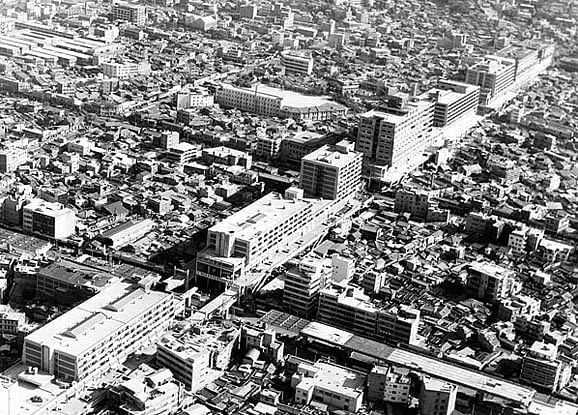
"Monumental State - Pyongyang is the ultimate city of monuments, a city planned upon the ideals of socialism and the Juche Idea. Furthermore, North Korea is unique in the world for the deep engagement of its most powerful political leader in the definition of architecture. Driven by divergent economic forces, architecture in South Korea has moved on a different trajectory. Nevertheless, its developmental state, at times in specific competition with Pyongyang, has produced similar visions of the monument."

Hence, the historical formation of architecture in both Koreas is structured by contradiction. While the North Korean architect is bestowed with the heroic task of building a socialist society, the architect-author figure in North Korea fades out as part of the mandate of the “great” leaders. The architect in South Korea, while imbued with the ideal of individual creativity, has long served the requirements of bureaucracy and capitalism."
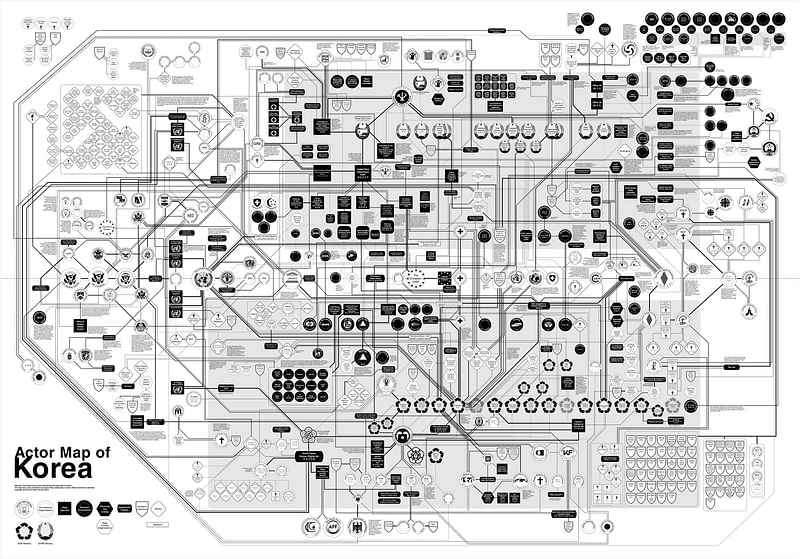
"Borders - Exemplified by the DMZ, the borders between North and South Korea comprises the most radically mediated, the most militarized, and the most politically charged boundary in the world. Borders expands the exhibition’s architectural concerns to the physical, conceptual, and emotional boundaries that separate and link the two Koreas. Research on the relation between North and South Korea show complex mechanisms that involve intricate interconnections among state apparatus, corporations, NGOs, religious and academic groups, etc."
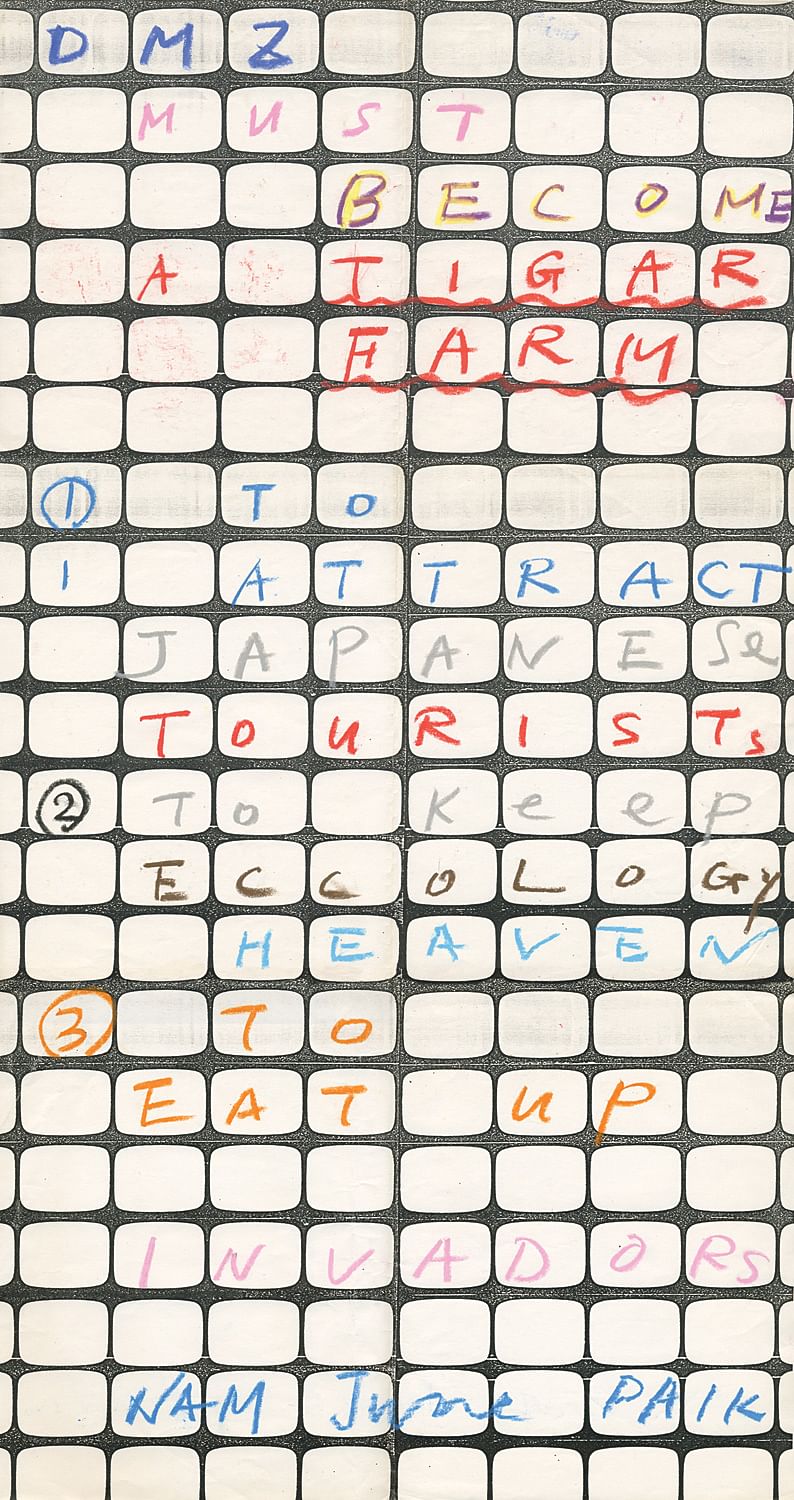
"Even the impenetrable spatial divide that is DMZ demonstrates that it contains an array of permeable elements and forces that can provide the basis of a more interconnected future. Along with such ecological and historical analysis, the DMZ is presented as a potential space of imagination and reconciliation by a diverse group of artists, architects, and writers."
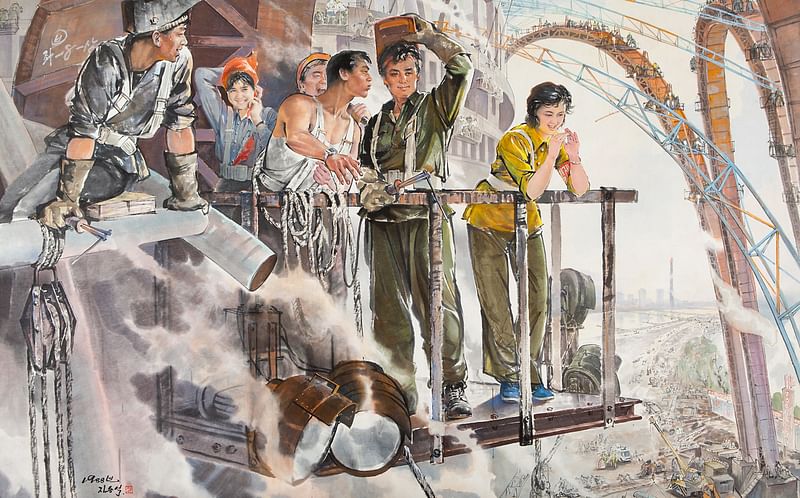
"Utopian Tours - Utopian Tours is comprised of a selection of images from the collections and commissions of Nick Bonner. In 1993, Nick Bonner co-founded Koryo Group, a Beijing based company that specializes in travel, film, and cultural production in North Korea. For more than two decades, Koryo Group has been committed to projects that seek to engage with the everyday life of North Korea. Comrades of Construction, comprised of linocuts, ink paintings, and posters dating from the mid-1950s to present, illustrate the significance of architecture in the construction of a self-proclaimed utopian society. Commissions for Utopia , an exploration of environments for sustainable tourism, and the comic strip A Day of an Architect, produced specifically for the Korean Pavilion, are part of his numerous commissions to anonymous North Korean architects and artists."
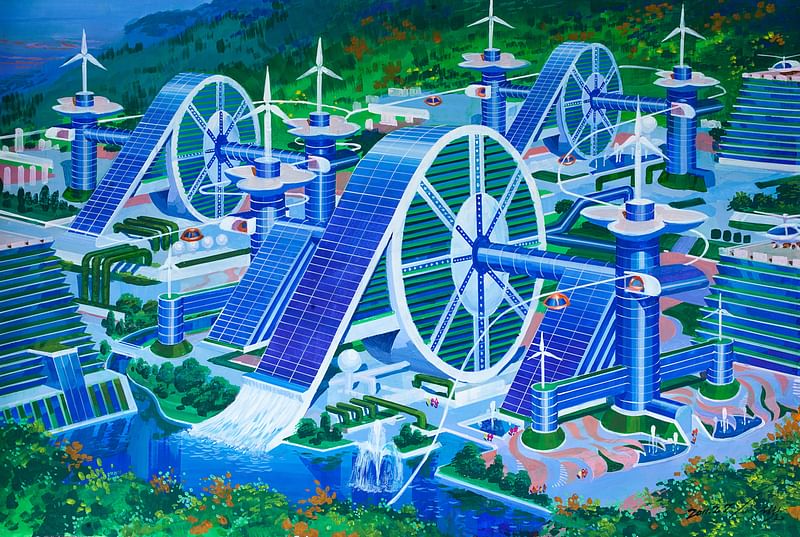
"The exhibition is co-curated by the architectural historians and critics Hyungmin Pai and Changmo Ahn. The exhibitors include Ahn Sekwon, Alessandro Belgiojoso, Nick Bonner (featuring the Mansudae Art Studio and anonymous artists and architects of North Korea), Marc Brossa, Che Onejoon, Charlie Crane, Maxime Delvaux, Jun Min Cho, Ik-Joong Kang, Karolis Kazlauskas and PLT Planning & Architecture Ltd., Dongsei Kim, Kim Hanyong, Kim Kichan, Seok Chul Kim & Franco Mancuso, Kim Swoo Geun, Young June Lee, Chris Marker, Philipp Meuser, Moon Hoon, MOTOElastico, Osamu Murai, Peter Noever (featuring the North Korean architects exhibited in Flowers for Kim Il Sung , MAK, 2010), Kyong Park (featuring Nam June Paik and the artists of Project DMZ , Storefront for Art and Architecture, 1988), James Powderly, Kyungsub Shin, Hyun-Suk Seo (featuring Kim Jong Hui et al.), Yehre Suh, Yi Sang and Dongwoo Yim."

Share
0 Comments
Comment as :